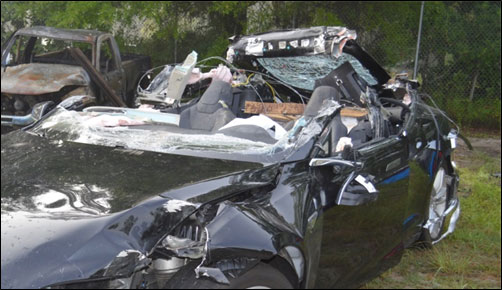The National Transportation Safety Board said on Tuesday that “operational limitations” of Tesla’s Autopilot system played a ‘major role’ in a 2016 crash.
One person was killed when a 2015 Tesla Model S collided with semi-truck on U.S. Highway 27A. The Tesla’s Traffic-Aware Cruise Control and Autosteer lane-keeping assistance features were being used by the driver at the time of the crash. The Tesla was traveling at 74 mph just prior to impact.
The crash was the first known fatal crash involving a car using an automated driver assistance system, NTSB chairman Robert Sumwalt said.
NTSB investigators found that the Autopilot system operated as designed, but should have demanded more attention from the driver. Futher, they said measuring the driver’s touching of the steering wheel “was a poor surrogate for monitored driving engagement.”
The NTSB released a preliminary report on the crash in May. And, in June, said the driver kept his hands off the wheel for extended periods of time despite repeated automated warnings not to do so. Further, NTSB said the drivers hands were on the wheel for just 25 seconds during a 37-minute period that Autopilot was engaged.
“Today’s automation systems augment, rather than replace human drivers. Drivers must always be prepared to take the wheel or apply the brakes,” Sumalt said.
Ahead of NTSB’s report, the family of Joshua Brown issued a statement that said the car wasn’t to blame:
“We heard numerous times that the car killed our son. That is simply not the case. There was a small window of time when neither Joshua nor the Tesla features noticed the truck making the left-hand turn in front of the car. People die every day in car accidents. Many of those are caused by lack of attention or inability to see the danger. Joshua believed, and our family continues to believe, that the new technology going into cars and the move to autonomous driving has already saved many lives. Change always comes with risks, and zero tolerance for deaths would totally stop innovation and improvements.”
